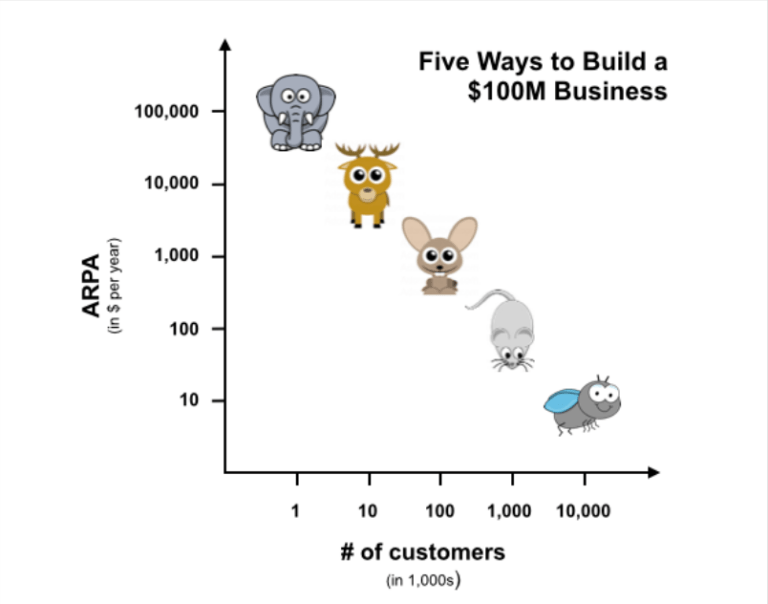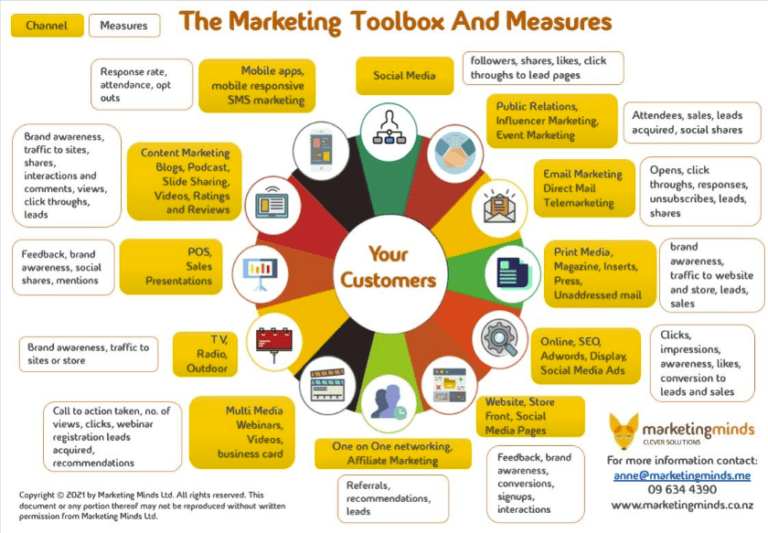Client Envy: the jealous feeling when your competitor announces landing a big client that you wish you could have won.
The grass always seems greener over there. Your only solution is to move up-market. Often, this entails targeting larger clients with bigger projects and budgets. However, it’s important to prepare your marketing foundation before you start actively campaigning, or you will waste both time and money.
Another reason companies need to move up-market is that their growth has stalled. There are some contributing factors that need to be understood before making an intentional and sustainable decision to make this move:
Resource-draining Churn

Small customers churn at a very high rate. And churn eats away at recurring revenue growth. This creates a leaky bucket problem, where you need to bring in more new customers every year to replace the ones who are short-term or low-budget.
Increasing CAC
Customer acquisition cost (CAC) is going up across the board. Paid advertising is becoming more expensive, more people are ignoring email, and with inbound marketing, it’s getting harder to break through the noise. You need a higher ROI to keep up.
It’s Time To Move Up-Market
Larger companies that pay more for your products churn at a much lower rate than small companies at low price points. They also bring in substantially more revenue over their lifetime as a customer.

Naturally, the first thought is to target larger clients. Consider this hunting analogy made by Chrisoph Janz in Five Ways to Build a $100M Business. He likened selling to customers to hunting different sized animals: bunnies, deer, and elephants.
Bunnies are customers that buy your lowest priced products. Bunnies are easy to catch and there are many of them, but they won’t feed you for very long. They also churn, which is costly.
On the other hand, Elephants buy your largest and most expensive products, but they’re tough to find and require a large team to take down. If you can do it, they’ll feed you for a long time. However, you may need to reconfigure your support teams and internal processes to accommodate them.
Deer, on the other hand, are customers who buy your mid-range products consistently. There are a lot of them. They require a little more marketing work to capture than bunnies, but it’s worth it.
Target client size is definitely worth considering. But you need to be prepared for the size client you will land. Not all large clients are good for your business.
Growing Pains When Moving Up-Market

The number one challenge is that your business has to evolve from its origins and its original customer base to serve a larger customer base with different product requirements, longer and more complex sales deals, and greater customer support expectations. There may also be a cultural shift from being a product-led business to one that is more sales-driven.
This evolution can take years to get right, so be sure this is something you want to do, as it will slow you down in the meantime. Your team may need to shift responsibilities, and that could change the personnel in key areas. It’s not uncommon for people to leave when you make these changes.
Targeting Up-Market
You may think Enterprise clients are a great target with huge budgets and large projects. But, is your brand presenting an Enterprise vibe? Even if you are targeting mid-market level clients when moving up-market, your brand may need a foundational makeover. Take an objective look at your marketing and objectively measure it against the following criteria:
- Stands Up to Competitors
If you haven’t signed up for your competitor’s newsletters and any other marketing, do it now. You need to understand what they are doing at the top of the funnel to attract clients. If you are not doing the same or better, you need to adjust your marketing. - Consistent Visuals & Messaging
When you look at your competitor’s website, social engagement, collateral, and trade show presence, how do you stack up? Most industries have a certain style about them. Some are serious. Others are approachable. But, you get a consistent emotional vibe from their brand materials. - Speaks Your Target Customer’s Lingo
When you started your business, you probably wanted to tell the world all about it. Times have changed, and customers focus on their own problems. If you are not speaking their language in all of your TOF marketing materials, they are going to find someone who does. - Addresses All Stages of the Buyer’s Journey
After you capture your customer’s initial interest, you need to keep it. This requires creating marketing materials that continue moving them through your funnel to a sale. Larger projects with larger budgets take longer to close and probably have multiple decision makers. Your marketing needs to address their questions at each and every stage of their solution search.
Up-Market Marketing: Align Your New Brand Presence
If you review the four criteria above, start with the largest, most important bucket: your website.
Website Updates
This is where customers go to check you out. They will judge you within seconds based on how your home page looks and the message it sends. Do not gloss over this step. If your homepage is trying to be all things to customers, change it. You may need to start making it harder for low-end clients to identify with your brand.
Raise Your Prices
This is hard for many businesses to come to terms with, as they feel they are letting their past customers down. But, you need to accept that you may need to dissuade some clients to attract the larger ones. You can still choose to do business with smaller customers on a case-by-case basis.
Test New Channels
These larger targets find solutions in different places than smaller ones. Your social media strategy of promoting sales and products may need to change to educating and brand awareness so your brand is more noticeable to those larger targets. If you haven’t had messaging and collateral for the middle and bottom of your funnel, you may need to create it, add landing pages, and email nurturing automation.
Increase Your Marketing Budget
There’s no way around this one. You need to pay to play in the bigger leagues. This may mean targeting new keywords in Paid Search, hiring analysts to write a white paper, or outsourcing your marketing altogether. This is a long-term strategy too. You can’t try this out for one quarter and expect results. Going up-market takes time and patient optimization.
Up-Market Optimization
Make sure you have measurable and reasonable goals for each campaign you try. Knowing your current conversion metrics is important. If you haven’t been tracking things like new site visitors, time on key pages, popular content, CAC, email opens, and downloads, you need to establish a benchmark. Measuring your efforts regularly and keeping a close eye on changes will provide an objective way to determine that your efforts are working.
Up-Market Encouragement
For a while, you may take one step forward and two steps back. It may not seem worth it. But, you can do this. It might take longer, and you are going to make mistakes. If you go into the process focusing on the goal, you will weather the bumps along the way as a learning experience.


